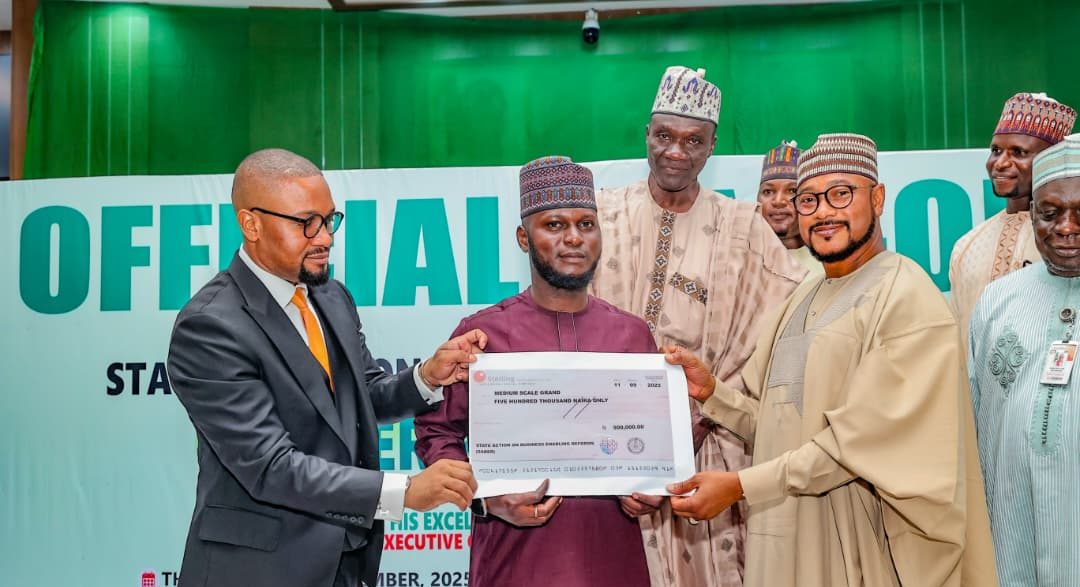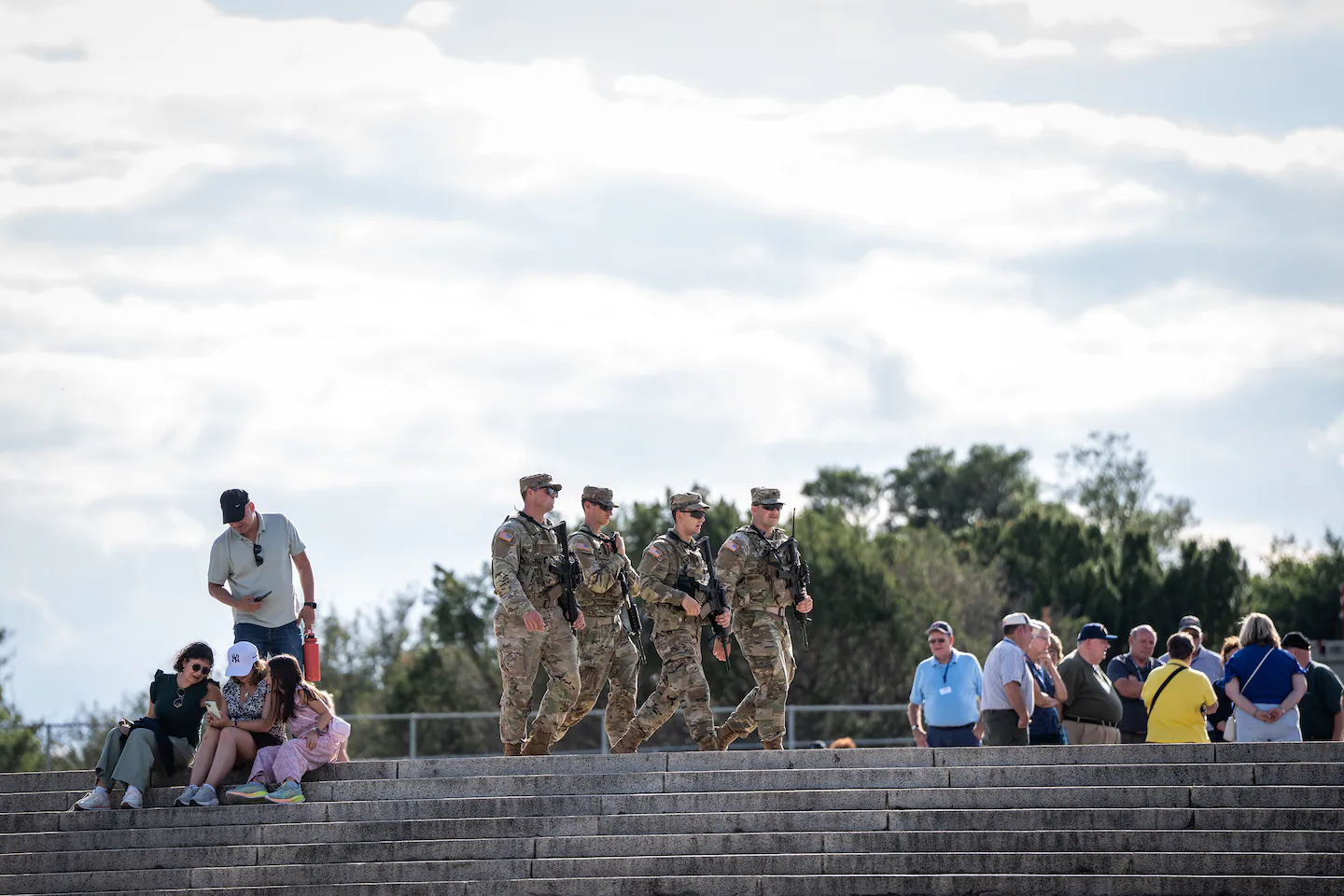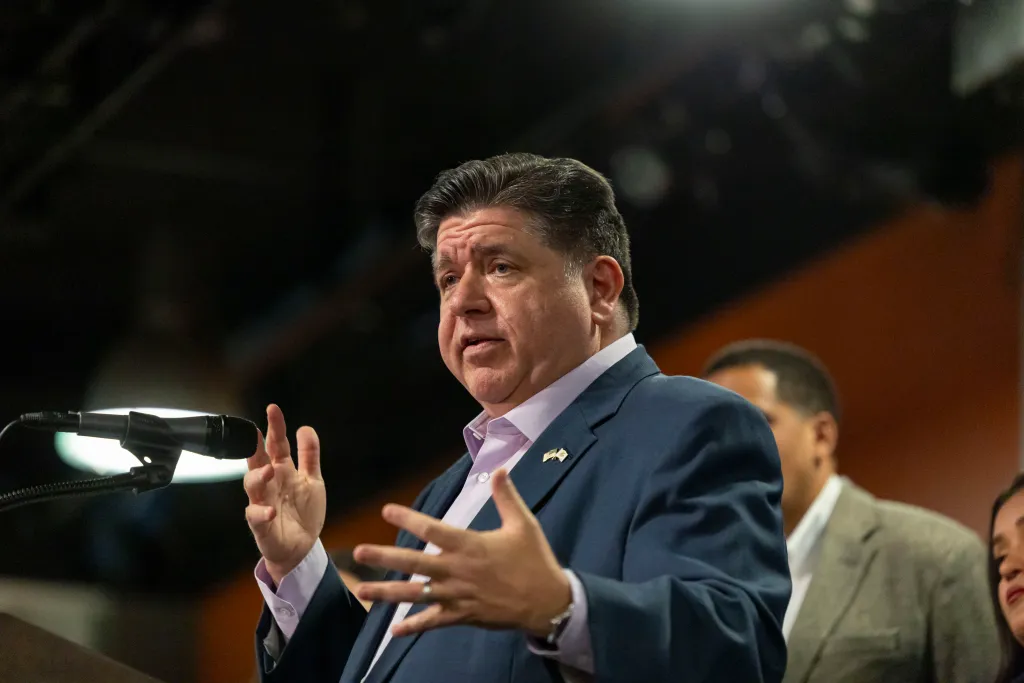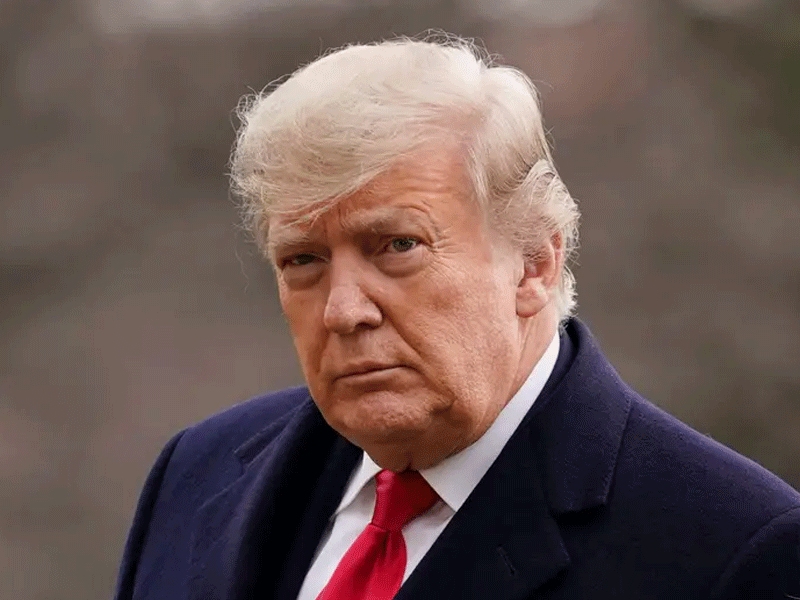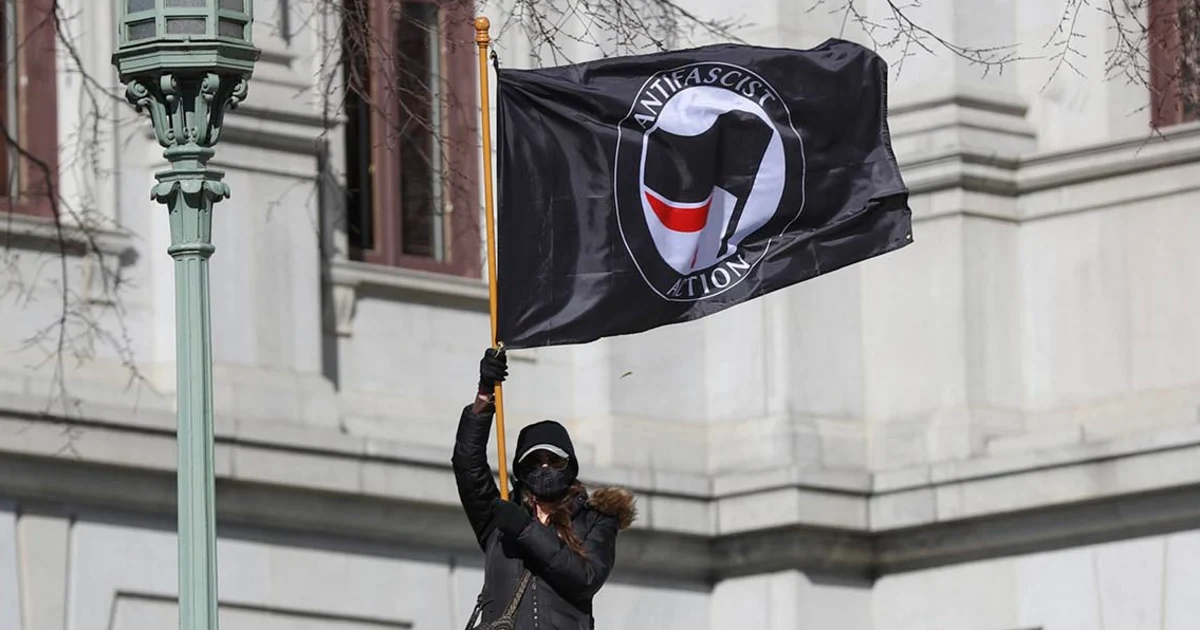
President Donald Trump signed an executive order Monday declaring “antifa” a “domestic terrorist organization.”
“All relevant executive departments and agencies shall utilize all applicable authorities to investigate, disrupt, and dismantle any and all illegal operations — especially those involving terrorist actions — conducted by Antifa or any person claiming to act on behalf of Antifa, or for which Antifa or any person claiming to act on behalf of Antifa provided material support, including necessary investigatory and prosecutorial actions against those who fund such operations,” the order read.
In MAGA’s hysterical rendering, antifa became a highly regimented army of subversive leftists plotting the destruction of everything patriotic Americans held sacred.
This follows an announcement the president made last week after attending a black-tie dinner at Windsor Castle with King Charles. “I am pleased to inform our many U.S.A. Patriots that I am designating Antifa, A SICK, DANGEROUS, RADICAL LEFT DISASTER, AS A MAJOR TERRORIST ORGANIZATION,” he wrote on social media. “I will also be strongly recommending that those funding ANTIFA be thoroughly investigated in accordance with the highest legal standards and practices. Thank you for your attention to this matter!”
Nearly every word in the president’s post was a lie. Antifa isn’t an organization. There is no legal statute with which to declare antifa a “major terrorist organization.” Nor does antifa have a network of rich, shadowy benefactors who can be unmasked. (What little money antifa’s practitioners do have typically comes from their own pockets.)
“I guess the problem with antifa not being an actual organization is that almost nobody is going out and pumping out PR for us,” an American anti-fascist activist told me after the president’s declaration Wednesday. (They asked that their name be withheld for fear of reprisals from the far right.) In other words: Because antifa — short for “anti-fascist” — refers to a decentralized and largely underground subculture of leftists dedicated to combating the far right, most of whom conceal their identities, there are no official leaders or spokespeople to go on cable news to refute Trump’s lies.
I interviewed roughly 60 American anti-fascists for my forthcoming book, “To Catch a Fascist: The Fight to Expose the Radical Right.” Over the past decade they have seen Trump and other MAGA figures exploit public misapprehensions about antifa to manufacture a bogeyman, threatening on multiple occasions to officially designate these sometimes-militant anti-fascists as terrorists. Those threats proved empty, but Trump’s executive order feels more menacing.
The second Trump administration, after all, is emboldened and even more explicit in its authoritarian designs. Moreover, the first nine months of this administration has been marked by the capitulation of elite institutions — courts, universities and media corporations — to Trump’s demands. This burgeoning 2025 anti-antifa panic feels like it has the potential to turn into a real, unchecked campaign of persecution, a state crackdown that won’t be limited to the vanishingly small number of citizens who belong to antifa groups, but to the American left writ large.
But how did antifa become one of MAGA’s go-to folk devils? Few Americans knew what antifa was before Trump’s first stint in the White House. By the end of 2017, however, a series of violent street confrontations with the far right catapulted antifa into the public consciousness, most notably after the deadly “Unite the Right” rally in Charlottesville, Virginia, when a neo-Nazi drove his crowd into a crowd of anti-fascists, killing 32-year-old Heather Heyer.
The first anti-antifa panic kicked into gear immediately afterward. At the helm was Microchip, a pseudonymous pro-Trump troll who started a viral petition to designate antifa a “domestic terror group.” The petition received over 300,000 signatures, even though Microchip knew it wouldn’t actually lead to antifa’s being designated a terror group — again, there is no federal statute to make such a designation. But crafting policy wasn’t the goal of Microchip’s petition. Rather, he wanted to engender fear and rage in the MAGA faithful while simultaneously distracting and deflecting from the very real, and often very deadly, violence of the far-right.
Microchip told Politico in 2017 that the intent of the petition was “to bring our broken right side together” after Charlottesville “and prop up antifa as a punching bag.”
“So the narrative changed from ‘I hate myself because we have neo-Nazis on our side’ to ‘I really hate antifa, let’s get along and tackle the terrorists,’” he told the news outlet, adding: “You can call it an extreme form of ‘whataboutism.’”
Trump’s promise to designate antifa as a terror group comes in the wake of the assassination of MAGA influencer Charlie Kirk.
This strategy would be duplicated again and again in the years to come. In MAGA’s hysterical rendering, antifa became a highly regimented army of subversive leftists plotting the destruction of everything patriotic Americans held sacred. A group lurking around every corner, threatening to smash the windows of your small business or to turn your kid trans or punch you for being a Christian. Right-wing media went into overdrive manufacturing baseless conspiracy theories. Antifa was blamed for nearly every mass shooting. Online rumors implicated antifa in a train derailment. Antifa arsonists, one rumor went, were starting the wildfires raging across the West. “Busloads of antifa,” went another, might be coming to your town to burn that down, too.
These conspiracy theories were especially pronounced in summer 2020, when MAGA sought to blame the mass anti-racist uprisings sweeping the country on antifa. The demonstrations — in response to the police killings of George Floyd and Breonna Taylor, among other Black Americans — did include some antifa groups, but those groups represented a fraction of a percentage of those taking part.
Nevertheless, Trump, the GOP and right-wing media became fixated on antifa’s involvement, blaming the demonstrations on these “leftist extremists.” It was a naked attempt to delegitimize the mass movement for Black lives, portraying it as somehow inorganic, the work of “outside agitators,” and creating a pretext for the demonstrations to be targeted by both far-right vigilantes and police.
“An-tee-fuh” became the villain of Tucker Carlson monologues on Fox News, the subject of panel discussions at the Conservative Political Action Conference and a fixture of Trump speeches. As this hysteria heightened, antifa became a catch-all for anyone MAGA disliked. Black Lives Matter was antifa. All anti-Trump protesters were antifa. Journalists were antifa. Even milquetoast Democratic politicians were somehow antifa.
I got to know what antifa actually is over the past decade as a reporter covering the far right. Although there are certainly groups and individual activists who identify as antifa, the word also refers to a set of principles and strategies for dismantling the far right: a militant style of anti-fascism that believes that fascist groups need to be sometimes physically confronted in the streets, that fascists should be allowed “no platform” to organize and that law enforcement can’t be depended upon in the fight against fascism. Antifa’s practitioners are anti-capitalist, describing themselves as different variations of anarchists, socialists and communists. Most hide their identities to protect against reprisals from far-right activists.
And while these antifa activists ascribe to a certain militancy, the violence they commit is rare and nonfatal, most often manifesting in the occasional act of Nazi-punching at street demonstrations. The vast, vast majority of the work they do is nonviolent, and it often involves gathering intelligence about the far right, even sometimes — as my book details — engaging in espionage. A 2020 study from the Center for Strategic and International Studies tied the far right to hundreds of murders over the previous 25 years, while anti-fascists were tied to zero murders in the same time frame. (A month after the report came out, a self-described anti-fascist killed a far-right activist in Portland.)
MAGA has an expansive definition of who constitutes antifa, with everyone even a little left of center liable to be labeled that way.
Trump’s promise to designate antifa as a terror group comes in the wake of the assassination of MAGA influencer Charlie Kirk. The suspect, Tyler Robinson, had written “Bella Ciao” and “Hey fascist, catch!” on some of his bullet shell casings, according to prosecutors. Although those might sound like references to antifa (“Bella Ciao” is an anti-fascist anthem), reports indicate the messages could be references to memes common in a niche subculture of online gamers. The right, however, is rushing to label Robinson “antifa” anyway.
The past few anti-antifa panics have shown that MAGA has an expansive definition of who constitutes antifa, with everyone even a little left of center liable to be labeled that way. Equating antifa with a “major terrorist organization,” as Trump has, then becomes an excuse for the right to target whomever it pleases, with both state persecution and vigilante violence.
Meanwhile, last week Trump’s Justice Department quietly removed a study online that showed far-right extremists commit “far more” fatal violence than those on the far left, while MSNBC reported that Trump’s campaign to mass-deport millions of immigrants from America has diverted FBI agents from monitoring and prosecuting violent far-right groups.
The Trump administration’s problem isn’t so much the scourge of political violence but who gets to commit it.
